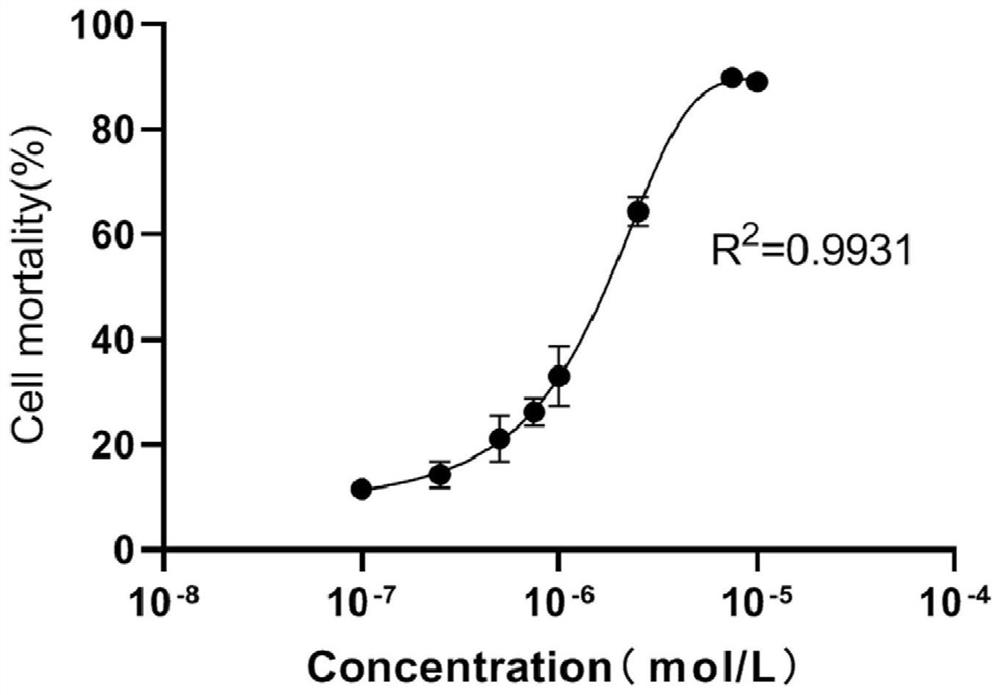Semi-quantitative detection method for heavy metal ions in water-soluble sample based on whole-cell biosensor
A heavy metal ion and biosensor technology, applied in the field of environmental biology, can solve the problems of long response time of fluorescent protein expression, high background signal, and practical obstacles, and achieve easy high-throughput screening, good safety, and easy operation Effect
- Summary
- Abstract
- Description
- Claims
- Application Information
AI Technical Summary
Problems solved by technology
Method used
Image
Examples
Embodiment 1
[0081] Example 1 Obtainment of heavy metal ions in response to recombinant bacteria
[0082] Using pSB1C3 as the starting vector (iGEM, http: / / parts.igem.org / Part:pSB1C3), a heavy metal response vector was constructed. The schematic diagram of the construction of the heavy metal response vector is as follows figure 1 shown. The specific construction method is as follows:
[0083]1. Synthesize the DNA sequence of CadA operon that specifically recognizes Cd(II), including Cd(II) response protein and bidirectional promoter (SEQ ID No. 1), the sequence is EcoRI, NotI, XbaI from 5' to 3' , Response protein reverse complement coding gene, bidirectional promoter, SpeI, NotI and PstI.
[0084] 2. Synthetic cleavage gene SRRz, whose sequence is shown in SEQ ID No. 2, the sequence is EcoRI, NotI, XbaI, SRRz cleavage gene, SpeI, NotI and PstI in sequence from 5' to 3'.
[0085] 3. Synthesize the terminator TrrnB, the sequence of which is shown in SEQ ID No. 3. The sequence is EcoRI, ...
Embodiment 2
[0090] Example 2 Rapid detection of sample heavy metal ion concentration by bacterial cell lysis efficiency
[0091] 1. Recovery and activation of recombinant Escherichia coli
[0092] Recombinant E. coli was streaked in LB plate medium from -80°C refrigerator, and cultured at 37°C for 15h. A single colony of the Cd(II) detection gene biosensor E.coli BL21-MCd was picked from the plate, and then inoculated into 5 mL of liquid LB medium containing chloramphenicol with a final concentration of 25 μg / L at 37°C, 220rpm, overnight culture for more than 15h.
[0093] 2. Preparation of Escherichia coli detection solution
[0094] The resuscitated and activated bacterial solution was transferred to fresh LB liquid medium at 1:50 (volume ratio), and IPTG inducer was added to make the final concentration 0.01 mmol / L. Shaker culture (37°C, 220rpm) to OD 600 The absorbance value was about 0.6, and the detection solution of Escherichia coli was obtained.
[0095] 3. Contact with the t...
Embodiment 3
[0108] Example 3 Semi-quantitative rapid detection of heavy metal ions in combination with chromogenic method
[0109] 1. Preparation of color system
[0110] Add 40mg / mL X-gal solution to Z buffer to a final concentration of 1mg / mL, mix well and add to 96-well plate for later use.
[0111] 2. Color rendering standard curve drawing
[0112] The test bacteria were activated, cultured and contacted with the sample to be tested according to steps 1 to 3 of Example 2.
[0113] The bacterial liquid in the 96-well plate was transferred to a centrifuge tube, centrifuged at 8000 g for 3 min, and the supernatant was taken. Prepare a β-galactosidase catalytic color detection system according to Table 1.
[0114] Table 1 Preparation of color detection system
[0115] reagent Volume (μL) X-gal (40mg / mL) 6 Bacterial liquid supernatant 30 Z buffer 204
[0116] Among them, Z buffer preparation method: add 0.12g MgSO to 50mL 1×PBS buffer solution 4 and ...
PUM
 Login to View More
Login to View More Abstract
Description
Claims
Application Information
 Login to View More
Login to View More - R&D
- Intellectual Property
- Life Sciences
- Materials
- Tech Scout
- Unparalleled Data Quality
- Higher Quality Content
- 60% Fewer Hallucinations
Browse by: Latest US Patents, China's latest patents, Technical Efficacy Thesaurus, Application Domain, Technology Topic, Popular Technical Reports.
© 2025 PatSnap. All rights reserved.Legal|Privacy policy|Modern Slavery Act Transparency Statement|Sitemap|About US| Contact US: help@patsnap.com



